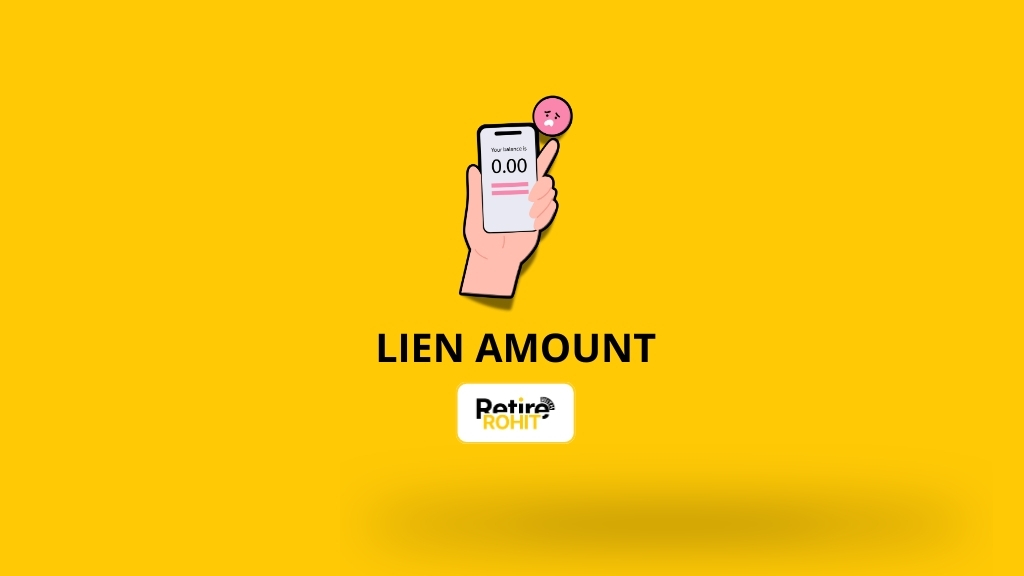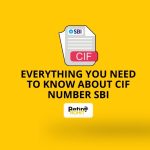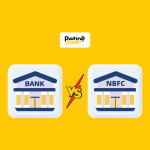What is Lien Amount?

Ever seen this in your bank app? Total Balance: ₹50,000; Available Balance: ₹30,000. And you thought, where did my ₹20,000 go? That ₹20,000 is not stolen. It’s not gone. It’s just on hold by the bank. That’s called the Lien Amount. So here we will learn what is lien amount.
Meaning of Lien Amount
Lien amount means the money that is frozen in your bank account. You can see it, but you can’t use it, not for shopping, not for transfer, not for withdrawal. It’s like when your mom packs your tiffin box with laddoos but says, “Don’t eat them, they’re for guests.” You have them, but you can’t touch them. Same with lien. The money is yours, but the bank says no until certain conditions are met.
Why Does the Bank Put a Lien?
Banks block money (put a lien) for these common reasons:
- You applied for an IPO (Zomato, Tata Tech, etc.)
- You missed your loan EMI, credit card payment, or taxes.
- Your account is flagged for fraud or suspicious activity.
- You have a secured credit card, and the bank holds your deposit.
- Some KYC or technical issue is pending.
For example, you applied for an IPO on Zerodha for ₹13,500. Your bank blocks ₹13,500 until shares are allotted. This amount becomes your lien.
- You get the shares, which are ₹13,500 are debited
- You don’t get shares of ₹13,500 that are released
Types of Liens
There are different types of liens, depending on who applies it, why it's applied, and whether you agreed to it or not:
1. Voluntary Lien
- This lien is created with your permission.
- You agree to it while taking a loan.
- It’s part of a legal contract.
- For example, car loans, home loans, gold loans, and many more.
2. Involuntary Lien
- This lien is applied without asking you, usually because you didn’t pay something on time.
- It’s done by the government or the court.
- For example,
Tax Lien: If you don’t pay income tax.
Court Judgement Lien: If you lose a court case and don’t pay damages.
Mechanic’s Lien: If you don’t pay someone for construction or repair work.
3. Statutory Lien
- This is a lien given by law itself.
- No need for any agreement; if the law says a lien can be applied, it will be.
- For example, the government freezes your property or bank funds for unpaid dues.
4. Consensual Lien
- Both borrower and lender agree on this lien in a formal contract.
- Terms and conditions are clearly written.
- For example, secured credit cards, lines of credit backed by savings or FD.
- Note: This is very similar to a voluntary lien, but with more detailed terms.
5. Non-Consensual Lien
- This lien is forced on you by law, without any agreement.
- Mainly applies when someone fails to pay taxes or other government dues.
- For example, if you ignore multiple income tax notices, the government can put a lien on your property.
6. Landlord Lien
- If you don’t pay rent, a landlord may have the right to put a lien on your commercial property or office items.
- Note: This is not common in all Indian states. Only a few allow it under specific rental laws.
- For example, you’re running a business and skipping rent for 3 months. Your landlord may hold your office assets to recover the money.
How to Remove a Lien Mark from Your Bank Account
If you see a lien mark on your account. First, find out why the lien was applied. It’s usually due to one of these reasons:
- Missed loan or EMI payments
- Unpaid credit card dues
- Pending tax payments
- KYC not completed
- App or technical issues
Once you know the reason, take the right steps to clear it.
Common Causes of Lien and How to Fix Them?
1. Missed Loan or EMI
- Pay the pending EMI or loan amount.
- Keep your repayments regular.
- The bank will remove the lien after the dues are cleared.
2. Credit Card Dues
- Clear the full outstanding bill immediately.
- Avoid delays or missed payments in the future.
3. Pending Taxes
- Pay your tax dues and any penalty amount.
- The government or tax authority will release the lien.
4. UPI or Virtual Card Issues
- Try reinstalling your UPI app.
- Delete and re-add the virtual card.
- This often removes the lien mark automatically.
5. KYC Not Done
- Complete your KYC process using Aadhaar, PAN, etc.
- Do it either online or by visiting the bank.
- Once verified, the lien will be removed.
6. Technical or System Error
- Contact customer care or visit your bank branch.
- Explain the issue and request a fix.
7. Unfair or Unknown Lien
- Speak to the bank officials directly.
- If not resolved, escalate to senior officers or file a formal complaint.
Benefits of Lien
A lien is not just a restriction. It actually helps both the lender and the borrower in many ways.
1. Protects the Lender (Moneylender’s Safety)
- When banks or lenders give you money, there’s always a risk you might not return it.
- A lien gives them a legal safety net.
- If you don’t pay back, the bank can use the lien amount to recover the dues.
- So, their money stays safe.
For example, you miss an EMI. Instead of running behind you, the bank can block your account balance.
2. Secures the Loan for the Borrower
- Borrowers can get loans easily when there’s a lien.
- It shows the bank that you're offering some form of security.
- This makes the process smoother and faster.
- The bank feels confident lending you money.
For example, you take a car loan and give your car as a lien. Bank trusts you more because they can take the car back if you don’t pay.
Conclusion:
In conclusion, the lien amount is just your money on pause. It’s still yours, but the bank says “Wait” until you finish a task, like paying EMI, completing KYC, or getting IPO results. Learn to check your lien amount, pay dues on time, and contact your bank if needed.


